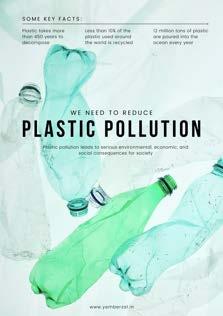
2 minute read
Towardsan AIDS-Free World: Preventionand Awareness
from Yemberzal Edition 6
by yemberzal
WrittenbyAatifMasoodi ContentWriter
Acquired Immunodeficiency Syndrome (AIDS) is a global health issue that has affected millions of people worldwide. While significant progress has been made in treating and managing HIV/AIDS, prevention remains the most effective approach. This article explores various strategies and initiatives aimed at preventing the spread of AIDS, focusing on education, awareness, testing, and accesstohealthcare.
Advertisement
Before delving into prevention methods, it is essential to understand the basics of HIV/AIDS. HIV (Human Immunodeficiency Virus) is a virus that attacks the immune system, leaving the body vulnerable to other infections and diseases. AIDS referstothemostadvancedstageofHIVinfection, characterizedbysevereimmunesystemdamage.
1.ComprehensiveSexEducation:
Education plays a vital role in preventing the transmission of HIV/AIDS. Comprehensive sex education programs should be implemented in schools and communities to provide accurate information about safe sex practices, condom use, and the importance of regular testing. These programsshouldalsoemphasizetheimportanceof consent, gender equality, and destigmatizing HIV/AIDS.
2.SafeSexPractices:
Promoting safe sex practices is crucial in preventing the transmission of HIV/AIDS. Consistentandcorrectuseofcondomscan significantly reduce the risk of infection. Encouraging open and honest communication aboutsexualhealth,promotingregulartesting,and encouraging individuals to know their HIV status arealsoessentialstepsinpreventingtransmission.
3. Prevention of Mother-toChild Transmission (PMTCT):
Preventing mother-to-child transmission is crucial for breaking the cycle of HIV infection. Educating pregnant women about the importance of seeking prenatalcare,gettingtestedforHIV,andadhering to antiretroviral medications can greatly reduce the risk of transmission during pregnancy, childbirth, or breastfeeding. Access to affordable and effective PMTCT services is crucial to ensure thehealthofbothmothersandbabies.
4.NeedleExchangePrograms:
Intravenous drug use poses a significant risk for HIV transmission. Needle exchange programs provide clean needles to drug users, reducing the risk of sharing contaminated needles and the spread of HIV. These programs should be accompanied by counseling services, drug rehabilitation programs, and access to HIV testing andtreatment.
5. Pre-exposure Prophylaxis (PrEP) and Treatment as Prevention (TasP):
Pre-exposure prophylaxis (PrEP) is a preventive medicationtakenbyindividualsathighriskofHIV infection. It significantly reduces the risk of contracting HIV when taken consistently. Treatment as Prevention (TasP) involves initiating antiretroviral therapy (ART) for individuals living withHIV,whichnotonlyimprovestheirhealthbut alsoreducestheriskoftransmissiontouninfected partners.
6. Combating HIV-Related Stigma and Discrimination:
Stigma and discrimination associated with HIV/AIDS create barriers to prevention efforts. It is important to address misconceptions, stereotypes,andfearrelatedtoHIV/AIDSthrough awarenesscampaignsandcommunityengagement. Byfosteringaninclusiveandsupportive—
—environment,individualswillbemorelikelyto seek testing, treatment, and support services withoutfearofjudgmentorsocialimplications.

7. Promoting Access to Healthcare:
Access to HIV testing, treatment, and care is crucial for prevention efforts. Governments, healthcare organizations, and NGOs must work together to improve healthcare infrastructure, increase affordability and availability of medications, ensure comprehensive healthcare coverage,andremovebarrierstoaccessingHIVrelatedservices.
8. Community Engagement and Empowerment:

Community engagement plays a vital role in HIV/AIDS prevention. Involving local communities, including key populations such as sex workers, men who have sex with men, and transgender individuals, in planning, implementing, and evaluating prevention programs ensures that interventions are culturally appropriate, relevant, and effective. Empowering communities with knowledge, resources, and support fosters ownership and sustainabilityofpreventionefforts.
Conclusion
The prevention of HIV/AIDS requires a comprehensive and multifaceted approach. By addressing education, safe sex practices, prevention of mother-to-child transmission, harm reduction strategies, and combating stigma,wecanmakesignificantstridestowards anAIDS-freeworld.Accesstotesting,treatment, and care, along with community engagement andempowerment,areessentialcomponentsof prevention. As individuals, communities, and governments work together, we can create a world where HIV/AIDS is no longer a global healthcrisis,butathingofthepast.Letusunite in our efforts to educate, prevent, and support those affected by HIV/AIDS, and strive for a future free from the burden of this devastating disease.



